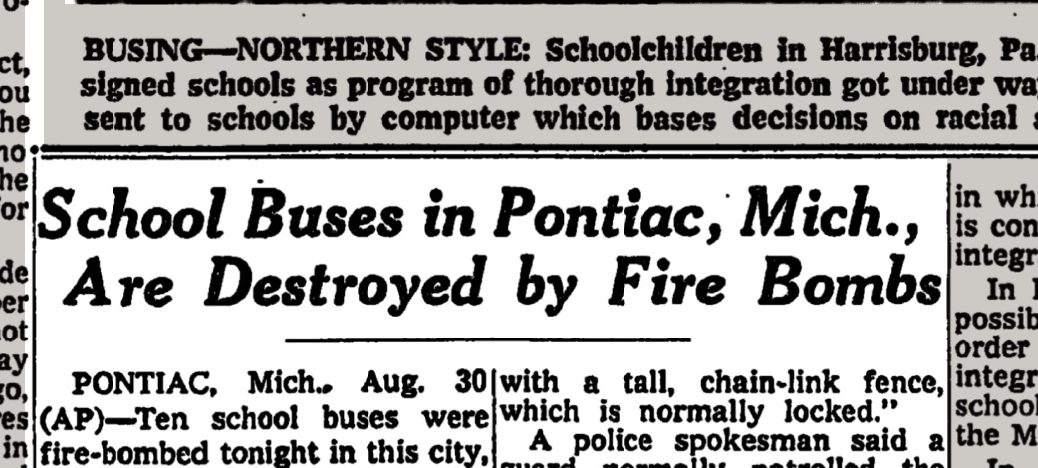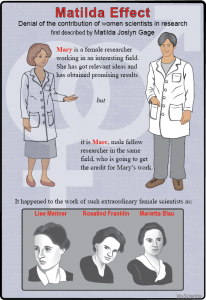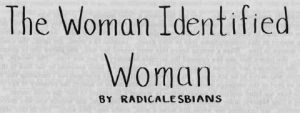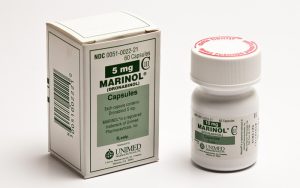May Peace Love Art Activism
Sometimes I cannot find a specific date for certain events. The following list is of things that have occurred in May, but I don’t know when. If you know, let me know.
BLACK HISTORY
Dred Scott in Mays/Dr John Emerson
In May 1836: Dr John Emerson assigned to Fort Snelling in the Wisconsin territory (a free territory as per the Missouri Compromise [1820]). Scott taken there with Emerson.
Two weeks before Scott arrived at Fort Snelling, Congress passed the Wisconsin Enabling Act, effectively making slavery illegal in the Wisconsin territory under three distinct statutes
1) the act mandated that the laws of Michigan, which was a free state, govern the new territory
2) the act made the Northwest Ordinance applicable in the territory, which also prohibited slavery
3) the act reaffirmed and supplemented the Missouri Compromise.
Thus, by taking Scott to this territory and keeping him there for two and a half years, Emerson was breaking the law in three distinct ways. These facts provided Scott with a legitimate basis on which to claim his freedom in court, although Scott did not act on this opportunity.
Harriet Robinson
May 1836 – April 1838: Sometime during this period, Dred Scott married Harriet Robinson, a slave owned by Major Lawrence Taliaferro, the Indian Agent stationed near Fort Snelling. Taliaferro was also a justice of the peace, and in that capacity he performed a formal wedding ceremony for his slave and her new husband. This was extraordinary and significant, and while not giving Dred Scott a new claim to freedom, the formal marriage provided another factual basis for his claim that he became free while he lived at Fort Snelling. Under the laws of the Southern states, a slave could never be legally married. Slave couples, of course, “married” each other throughout the South. Often a master performed a ceremony for his slaves. Sometimes white clergymen or slave preachers consecrated slave unions. Some slaves simply announced they were married or went to their masters to ask permission to live as a couple. Often slave communities developed their own ceremonies exchanging vows such as “until death or master do part.” Slaves understood the precarious nature of their personal lives.
From the Chicago-Kent Law Review (3/29/2007) No Southern state allowed slaves to be married under the eyes of the law for three important reasons.
First, as law students learn in family law, a marriage is a contract between three parties—the two spouses and the state. Slaves could never have a legal marriage because American slaves could not be parties to contracts. No American slave state allowed slaves to make contracts or in any other way perform legally binding acts, including marriages.
Second, a legal recognition of slave marriages would have undermined the property interest of masters. Such marriages might have limited the right of the master to sell one of the partners.
Finally, recognition of slave marriages might have led slaves to claim other rights. The legal right to marry implies the right to raise your own children, and under common law a husband or wife cannot be compelled to testify against his or her spouse in a prosecution. A husband at common law had a duty to protect is wife from assaults from others, but slaves could never protect their wives from the assaults of their masters or overseers.
Scotts to St Louis
In May 1840: the Army sent Dr. Emerson to Florida to serve in the Seminole War. On his way there he left his wife and the Scotts in St. Louis. (BH, see March 9, 1841)
Dred Scott 14 years later
In May 1854: Federal Judge Robert William Wells told the jury that Scott’s status was to be determined by Missouri law. Since the Missouri Supreme Court had already decided that Scott was a slave, the federal jury upheld his status as a slave.
If an Illinois court had previously declared Scott free, then the result would have been different. Judge Wells might then have held that, under the Full Faith and Credit Clause of the Constitution, that Missouri was obligated to recognize the judicial proceedings that had emancipated Scott. But, no such proceeding had in fact ever taken place in Illinois or in the Wisconsin Territory. Thus, Scott and his family remained slaves.
The next stop in Dred Scott’s legal odyssey was the United States Supreme Court. An appeal would be more expensive than the Blows, by now Scott’s main financial patrons, could afford. Moreover, this was not a case that Scott’s lawyer, Rosewell Field, was able to finance or even argue. However, Montgomery Blair, a Washington lawyer well connected to Missouri politics, agreed to take the case for free.
In May 1856: the Supreme Court postponed a decision and scheduled reargument for the following term. (see Dred Scott for the expanded story)
Freedman’s Village
In May 1863: the U.S. government established the Freedman’s Village across the Potomac River from Washington, D.C., to help address the needs of the growing number of individuals who had escaped slavery in the south during the Civil War. These free men and women — often referred to as “contrabands” by the government — had all traveled north from Virginia, the Carolinas and other regions of the south in hope of finding work and opportunity. Under the direction of the government and the American Missionary Association, the Freedman’s Village was intended to house, train and educate freedmen, women, and their children. The village, originally located in what is today Arlington Cemetery, was run by the Freedman’s Bureau during most of its existence. Homes in the village were made of wood and housed two to four families each. As the community grew, the village provided housing, education, training for employment skills, church services, medical care and food for the former slaves. [VA Foundations article] (see May 1)
Marcus Garvey
In May – June 1916: Garvey began a year-long, 38-state speaking tour that takes him across America. (next BH, see, see Aug 19)
Marcus Garvey a year later
In May 1917: Garvey returned to New York after completing his U.S. speaking tour. Thirteen members joined to form the New York branch of the Universal Negro Improvement Association. (BH, see May 5; see Garvey for expanded story)
Scottsboro Nine
In May 1950: Andy Wright was paroled again. He found a job in an Albany, NY hospital. When asked about Victoria Price upon his release, Andy said: “I’m not mad because the girl lied about me. If she’s still living, I feel sorry for her because I don’t guess she sleeps much at night.” He was the last Scottsboro defendant to leave jail. (see Scottsboro for expanded story)
School Desegregation
On August 30, 1971 Robert Miles and four other Klansmen had bombed 10 empty school buses shortly before a court-order issued by Judge Damon Keith to use busing to integrate schools in Pontiac, Michigan, was supposed to go into effect. In May 1973 Miles and his co-defendants were convicted of the bus bombings. Miles then spent the rest of the decade in jail, first at Leavenworth and from October 1974 until his release in late 1979 from the Federal prison in Marion. (BH, see June 14, SD, see June 21)
Laquan McDonald
In May 2016: Chicago police lieutenant Anthony Wojcik, who will be later recommended by Inspector General Ferguson to be fired, retired. (B & S, see July 5; McDonald, see In August)
May Peace Love Art Activism
Feminism
National American Woman Suffrage Association
In May 1890: the National American Woman Suffrage Association formed as a unification of the National Woman Suffrage Association (NWSA) and the American Woman Suffrage Association (AWSA).
Matilda Gage
In 1893: Matilda Gage published her magnum opus, Woman, Church, and State.
Gage also spoke of organized religion: “The greatest evils to women in all ages have come through the bondage of the Church. Women must think for themselves and realize that the story of the creation with the pair in the garden and the speaking serpent standing on his tail was a myth.” (Feminism, see Nov 7; see Gage for expanded story)
“The Matilda effect”
In May 1993: science historian Margaret W. Rossiter described and names “The Matilda effect.” The abstract of the article stated: Recent work has brought to light so many cases, historical and contemporary, of women scientists who have been ignored, denied credit or otherwise dropped from sight that a sex-linked phenomenon seems to exist, as has been documented to be the case in other fields, such as medicine, art history and literary criticism. Since this systematic bias in scientific information and recognition practices fits the second half of Matthew 13:12 in the Bible, which refers to the under-recognition accorded to those who have little to start with, it is suggested that sociologists of science and knowledge can add to the ‘Matthew Effect’, made famous by Robert K. Merton in 1968, the ‘Matilda Effect’, named for the American suffragist and feminist critic Matilda J. Gage of New York, who in the late nineteenth century both experienced and articulated this phenomenon. Calling attention to her and this age-old tendency may prod future scholars to include other such ‘Matildas’ and thus to write a better, because more comprehensive, history and sociology of science. (next Feminism, see Aug 5)
May Peace Love Art Activism
Vietnam
British withdraw
In May 1946: British troops withdrew from Vietnam (see “In July“)
Sons and Daughters in Touch
In May 1989: Sons and Daughters in Touch formed to locate, unite and support America’s Gold Star Children who lost their fathers in the Vietnam War. Among the 58,286 Americans lost in Southeast Asia, it is estimated that more than one-third were fathers. (see June 21, 1992)
May Peace Love Art Activism
United Farm Workers
César E. Chávez /Prop 14
May 1976: Proposition 14 drive gets 719,000 signatures. Although the measure didn’t pass, it forced lawmakers to vote money for the Agricultural Labor Relations Board (ALRB). (California Women for Ag article) (see February 10, 1978)
Arturo Rodriguez
In May 1993: veteran UFW organizer Arturo Rodriguez succeeded César E. Chávez as union president. (LA Times article) (August 8, 1994)
May Peace Love Art Activism
see May Music et al for more
Pete Seeger
In May 1962: a Court of Appeals overturned the conviction of Pete Seeger. Fortuitously for Seeger, that same week Peter, Paul, and Mary’s cover of Seeger’s “Where Have All the Flowers Gone?” hit the Top 40 chart and his blacklisting began to dissipate.(see June 27)
James Brown Live at the Apollo
In May 1963: recorded October 24, 1962, James Brown and The Famous Flames released Live at the Apollo. In 2003, the album was ranked number 24 on Rolling Stone magazine’s list of the 500 greatest albums of all time. In 2004, it was one of 50 recordings chosen that year by the Library of Congress to be added to the National Recording Registry.
Little Stevie Wonder
In May 1963 – recorded in June 1962 during a Motortown Revue performance at the Regal Theater in Chicago Little Stevie Wonder’s The 12 Year Old Genius album released.
Jimi Hendrix/LSD
In May, 1966: Jimi Hendrix took LSD for the first time at the Cheetah Club in New York City, after which he told a friend he”looked into the mirror and thought I was Marilyn Monroe.” (LSD, see “In September” ; Hendrix, see Sept 24 )
Beatles/LSD
In May 1967: Paul McCartney announced that all the Beatles had “dropped acid.” (see May 20)
The Road to Bethel
In May 1969: Hugh Romney and the Hog Farm commune hired to work at festival for security, free food, and free stage. (see Chronology for expanded story)
John Yoko and the Dakota
In May 1973: John Lennon and Yoko Ono moved from Greenwich Village to a 12-room apartment at the Dakota near Manhattan’s Central Park. The couple had been drifting apart, however, and she had busied herself recording the albums Approximately Infinite Universe and Feeling The Space. (see May 30)
May Peace Love Art Activism
LGBTQ
Radicalesbians
In May 1970: a group of lesbians–some who were members of NOW, but unhappy with the group’s direction–formed their own group called the Lavender Menace, which later became known as the Radicalesbians. The group presented a manifesto, “The Woman-Identified Woman,” at The Second Congress to Unite Woman in May 1970.
Karla Jay, PhD, a member of the organization, wrote that the manifesto “…[S]tarted by defining a lesbian as the ‘rage of all women condensed to the point of explosion.’ The true lesbian, we wrote, acted ‘in accordance with her inner compulsion to be a more complete and freer human being.’…In addition to desexualizing lesbianism, the document declared that lesbianism is a socially constructed ‘category of behavior possible only in a sexist society characterized by rigid sex roles and dominated by male supremacy…In a society in which men do no oppress women, and sexual expression is allowed to follow feelings, the categories of homosexuality would disappear.”’ (History as a Weapon article) (see May 18, 1970)
May Peace Love Art Activism
FREE SPEECH
Student Rights
In May 1983: after reviewing the May 13 edition of the paper, the principal of Hazelwood East High School (Florissant, MO),Robert Reynolds, decided that two articles should not be published. The articles covered teenage pregnancy at Hazelwood East and the effects of divorce on students. Reynolds decided to delete the two pages on which they appeared, thus deleting additional articles as well. (Landmark Cases article) (next FS, see In November; next SR, see January 15, 1985)
May Peace Love Art Activism
Cannabis
In May 1985: made by Unimed, Marinol is the trade name for dronabinol, a synthetic form of delta-9 tetrahydrocannabinol (THC), one of the principal psychoactive components of botanical marijuana. It was approved in May 1985 for nausea and vomiting associated with cancer chemotherapy in patients who fail to respond to conventional antiemetic treatments. In December 1992, it was approved by FDA for the treatment of anorexia associated with weight loss in patients with AIDS. Marketed as a capsule, Marinol was originally placed in Schedule II. (Medical Marijuana article) (see September 6, 1988)
May Peace Love Art Activism
AIDS
May – June, 1988: the CDC mailed a brochure, Understanding AIDS, to every household in the U.S: approximately 107 million brochures. (see December 1, 1988)
May Peace Love Art Activism
May Peace Love Art Activism, May Peace Love Art Activism, May Peace Love Art Activism, May Peace Love Art Activism, May Peace Love Art Activism, May Peace Love Art Activism, May Peace Love Art Activism, May Peace Love Art Activism




